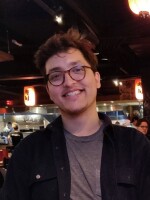Gustavo Sagrero: Could you explain a little about what you do and the purpose of the Nevada Resilience Project?
Diana Lara: The Nevada Resilience Project was established through a crisis counseling and training grant from the Substance Abuse and Mental Health Services Administration. It was a response to the COVID-19 pandemic, specifically to address the mental health crisis people are experiencing due to the pandemic.
The Nevada Resilience Project partnered with multiple providers throughout the state of Nevada, including both rural and non-rural areas. I’m sure you’ve heard this phrase before: it takes a community. And so beyond addressing the mental health crisis, our ambassadors become community advocates, providing individuals with services, resources, or referrals for whatever challenging events the community might be facing.
Sagrero: Let’s start with explaining the recovery process that communities go through when a catastrophe happens.
Lara: There’s the pre-disaster where fear and uncertainty happen. We don’t know what’s coming. We obviously saw that towards the beginning of the pandemic; it was very scary for a lot of people.
Then we have the impact phase. A lot of intense emotional reactions occur. You might feel threatened, a threat might present itself, and so you want to protect your family. A lot of people hoard things, such as toilet paper or food, medications.
Then you step into that heroic phase. That’s where a lot of activity is happening, but it’s very low productivity. That’s where the community steps in [to] check in on your neighbors. “What do you need? Do you need food for the week?” Or, you know, I see it constantly on social media platforms, people asking for help, gas cards, food, diapers. And so, it’s great to see the community come together.
And then we have that honeymoon phase where disaster assistance is seen. Community bonding occurs. It’s important for communities to embrace this time because resources, education and information does set up the success for the response.
And so, then we have that disillusionment. Communities and individual realize the limits of disaster assistance. Optimism turns into discouragement. Stress begins to take a toll. I’m seeing a lot of this right now, you know, a lot of people are starting to become a little hopeless, a little losing their patience. Currently, we’re now three years into this -
Sagrero: ... into this pandemic ...
Lara: ... into this pandemic. And we don’t really seem to have any kind of clear resolution or quote-unquote anniversary. And so, I think that that looks differently for everybody. You know, that anniversary may be the anniversary where they lost a loved one, where they lost their home. So I think it’s very different in comparison to a natural disaster, so to speak.
Sagrero: So the difference that you’re kind of pointing out is that, you know, a community experiences a catastrophe as a unified event, typically. But this is more of, like, an isolated event where people are kind of segmented off into their own ...
Lara: … their own lives. Exactly. It’s really difficult to really answer that question on “Well… when is that anniversary?” It’s different for everybody.
Sagrero: So let’s say somebody comes up to you, and they say, like, “Hey, I’m in a dark spot. What do I do?”
Lara: Something that I really like to emphasize when I talk to these individuals, it’s okay to not be okay. You know, I’ve been there. We’ve all been there. And just listening sometimes is all that it takes. That means the world to a lot of people. And if they do need a little extra help, providing them with mental health services, counseling, depending on what they’re going through, whether it’s the loss of a parent or grandfather, pet, whatever it may be, then that’s where we try to step in and provide referrals or services.
Find out more about the Nevada Resilience Project at nevada211.org/nevada-resilience-project.
This story is part of the KUNR series “Changed by the Pandemic.”
Follow Gustavo Sagrero on ig @gus.chavo || tw @goose_chavo







